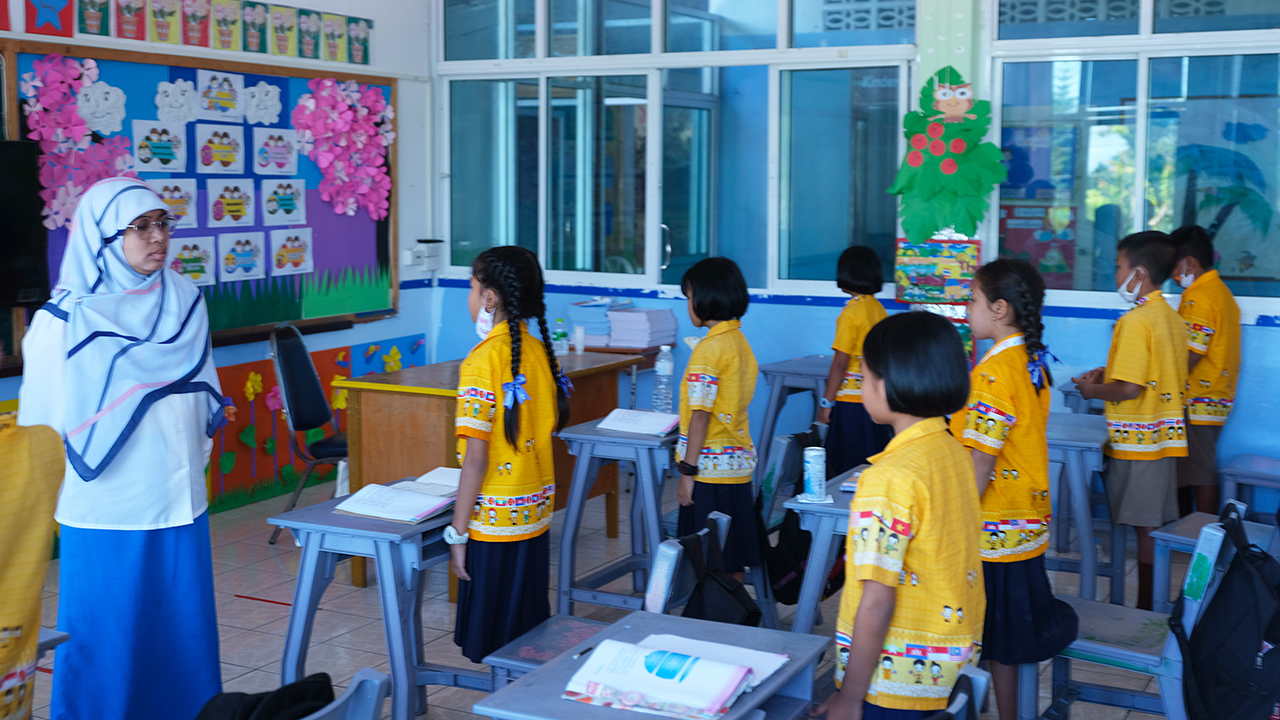Community-centered approach focused on ownership and skills development for current and future generations
Students at local school where activities took place
UNDP Thailand
In addition to the cash-for-work program, local community organizations were established that organize joint activities and serve as a platform for collaboration between the Koh Tao Municipality and locals. Five community organizations were established: Koh Tao Fisherfolk group; Sairee Taxi Boat Group; Mae Haad Taxi Boat Group; Koh Tao Women Group; and Koh Tao Youth Group.
The communities received training on the implementation of biodiversity finance solutions, financial and digital literacy, and other skills such as fish processing and T-shirt tie-dying. Locals started using community organizations to coordinate clean-ups and committed to continue working on marine debris removal and beach cleaning.
As part of the cash-for-work program, boat drivers were also trained in waste segregation. After the program they submitted a proposal for the Koh Tao Sub-district Municipality to establish waste separation bins in their tourist boats.
Moreover, KTB promoted activities for the students at Baan Koh Tao School focused on financial literacy, inclusion, and knowledge management. A small-scale studio for Koh Tao Kids Channel (TaoNoi Channel) was set up to create knowledge content for students. KTB also financially supported fisherfolks in acquiring fish aggregating devices.
Willingness of locals to participate, pre-existing identification in groups that serve as the foundation for the formation of the community organizations (i.e., fishers, boat drivers, etc.), human and financial resources for the formation of the organizations, and willingness of the local government to engage with the organizations.
Strengthening the sense of ownership and addressing the specific needs and skills gap of each subgroup within the target population has been critical in establishing community organizations. By getting organized into formal associations, local communities gain strategic entry point to engage with the local government and other organizations.. The submission of a proposal for the Koh Tao Sub-district Municipality to fund the establishment of bins for waste separation is a clear example of that.
In addition, it has facilitated collaboration between different groups. For example, it helped find a solution among diving and fisher folk groups by zoning marine areas in partnership with the local government. The diving group also engaged in the marine debris collection, playing an important role in it.
